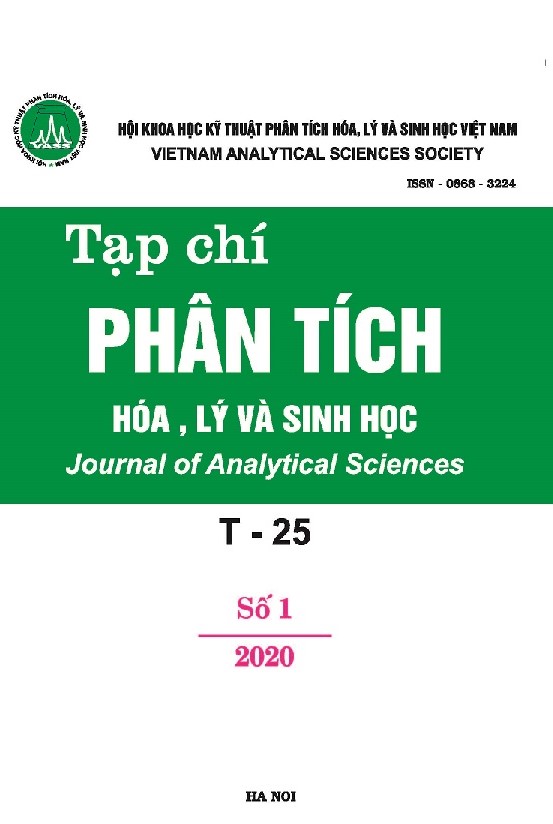NGHIÊN CỨU MỨC ĐỘ Ô NHIỄM, ĐẶC TRƯNG TÍCH LŨY VÀ NGUỒN PHÁT THẢI CÁC HYDROCACBON THƠM ĐA VÒNG TRONG MẪU BỤI LẮNG TẠI KHU VỰC THÁO DỠ PHƯƠNG TIỆN GIAO THÔNG HẾT HẠN SỬ DỤNG VÀ KHU VỰC ĐÔ THỊ Ở MIỀN BẮC VIỆT NAM
Tóm tắt
Contamination status of 16 polycyclic aromatic hydrocarbons (PAHs) were examined in settled dust
samples collected from working (ELV-W) and living (ELV-L) areas of end-of-life vehicle processing
workshops and from urban houses (U-H) in northern Vietnam. Levels of 16 PAHs in the ELV-W
samples ranged from 1200 to 3600 (median 3100) ng/g, which were significantly higher than those
detected in the ELV-L samples (920; 600–1800 ng/g) and the U-H samples (930; 470–1300 ng/g).
Ring-number profiles of PAHs were relatively similar between the three sample groups: 4-ring > 3 ring
≈ 5-ring > 6-ring > 2-ring. The most predominant compounds were chrysene, pyrene, fluoranthene,
and phenanthrene. Proportions of high-molecular-weight PAHs (≥ 4 rings, 76 ± 9%) were more
abundant than those of low-molecular-weight compounds (≤ 3 rings, 24 ± 9%), suggesting that PAHs
were mainly derived from pyrogenic sources. However, several diagnostic ratios of PAHs have
revealed specific petrogenic sources in working areas of the ELV workshops. Our results suggest that
primitive ELV processing activities are potential sources of PAHs. The improvement of technology and
waste management system in this ELV area is needed, for example, prohibition of ELV waste
uncontrolled burning and appropriate treatment of used engine oils and fuels.
Keywords. PAHs, settled dust, end-of-life vehicle, urban, Vietnam.

